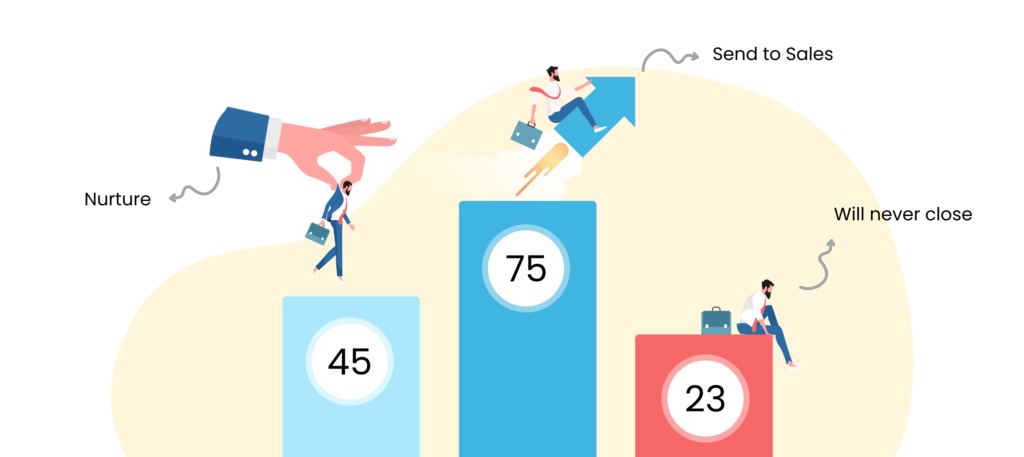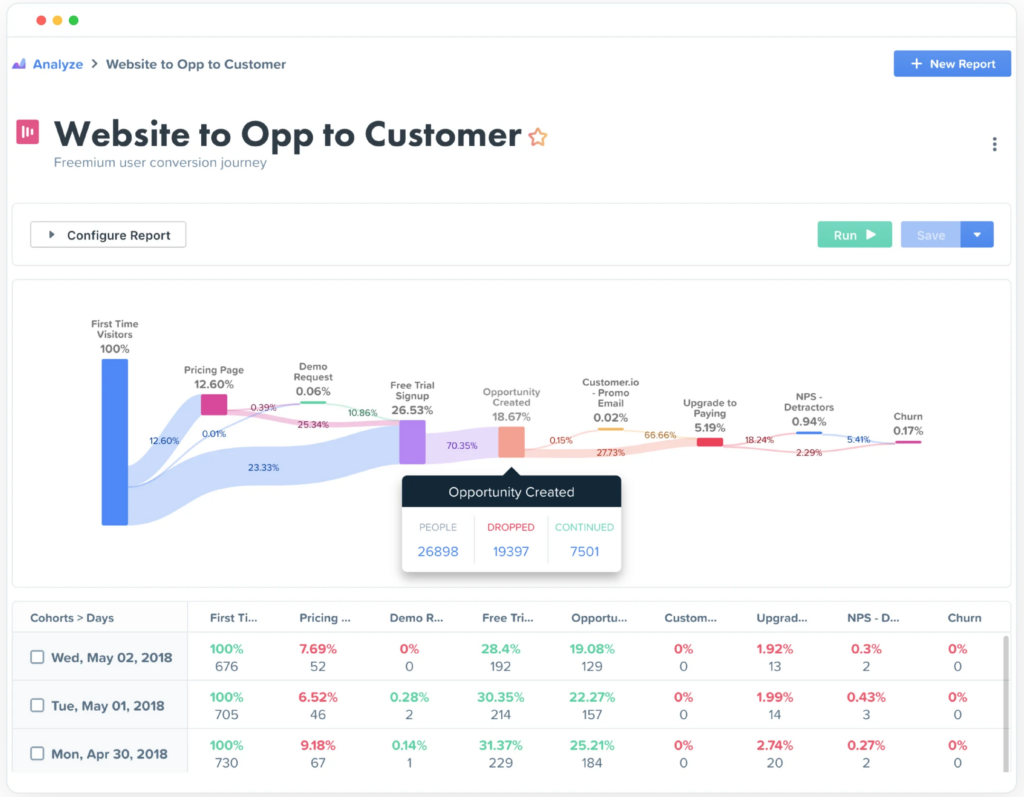How to Enhance SaaS Sales Performance By Leveraging Key Data
Published on Sep 14, 2023

I think we can all agree that efficiently using data is an asset. For perspective, McKinsey & Company reports that “data-driven organizations are 23 times more likely to acquire customers, six times as likely to retain customers, and 19 times more likely to be profitable.” But what are some specific ways you can enhance SaaS sales performance by leveraging data?
That’s what I’ll tackle in this post so we can have a clear understanding of how to put SaaS sales data to use in a practical way. More specifically, I’ll cover core areas of SaaS sales that can be dramatically improved by leveraging key data.
Let’s jump in.
Audience Segmentation
Today’s customer is more sophisticated than ever, with most having incredibly high expectations. This is true in traditional e-commerce, and it’s especially true in SaaS.
One of the best ways to meet or exceed customer expectations is with audience segmentation, as it paves the way for personalization. For reference, “80% of audiences tend to do business with a brand that personalizes their experience with it,” and “80% of companies that use market segmentation report increased sales.”
For example, you could use SaaS sales data to break your audience down into different segments, such as demographics, purchase history, engagement level, product interest, and so on. From there, you could tailor your sales approach to address each segment’s unique needs, thus creating a more enjoyable lead experience and increasing your odds of converting.
Lead Scoring
Your SaaS sales team’s time is valuable. If they spend time pursuing the wrong leads with a low likelihood of converting, they waste time and money, often with nothing to show for it.
On the other hand, if they pursue the right leads — sales qualified leads — with a high interest in buying, your conversion rate can’t help but increase. And you can send leads that aren’t yet sales-ready to your marketing team to be nurtured.
But how do you quantify leads and know who’s sales qualified and who’s only marketing qualified? This can be done with lead scoring.
By assigning leads points based on behaviors like website pages visited, website interactions, and contact methods, you can assign each lead a score.
For instance, a lead that simply read a couple of your blog posts and visited your pricing page would receive a lower score than someone who visited your pricing page, signed up for your newsletter, downloaded a PDF, and contacted you through a web form.
Using lead scoring data like this can be invaluable for identifying which leads to prioritize, which to nurture, and in some cases, which leads will never close.

Customer Journey Analysis
Every customer journey consists of a series of touchpoints. From the very first time someone learns about your SaaS product to the moment they actually buy, there’s a customer journey that takes place in between.
The better you understand the customer journey, the smoother you can make it. In turn, this creates a better customer experience, which sets the tone for more SaaS sales. And in the grand scheme of things, this can factor into deeper customer loyalty because it creates a great first impression, which will make many customers want to stick around longer, renew their subscriptions, become brand ambassadors, and more.
Another key way to enhance SaaS sales performance with data is through customer journey analytics, which “is the process of identifying customer touchpoints and understanding how they affect customer experiences and business outcomes.”
Here’s an example of what that looks like using a customer journey analytics platform like Woopra.

Using data like this gives you a bird’s-eye view of each customer touchpoint end-to-end so you can understand the customer journey on a granular level. This brings us to our next point.
Identifying Friction Points That Lead to Drop-off
By having customer journey analysis data, you can see exactly where leads are dropping off in the sales process.
Say, for example, there’s a higher-than-average drop-off from the sales demo to the free trial signup. There’s a smooth transition from one touchpoint to another throughout the rest of the customer journey, but your data shows that not as many leads are signing up for your free trial as there should be.
This would signify that your sales demo could use improvement. As a result, you could zero in on your sales demo further to figure out what’s wrong and come up with a solution. Then, once you optimize your sales demo, this hiccup in the customer journey should be resolved, and an increase in conversions should occur.
Identifying Strengths in the Customer Journey
Besides spotting friction points, you can also use customer journey analysis data to determine what you’re doing right.
Say that a higher-than-average number of leads are moving from your pricing page to requesting a demo. This would indicate that the core elements of your pricing page like design, informational structure, layout, CTA, and so on are working well and leads are responding favorably.
In this case, you’d likely want to leave your pricing page alone, as it’s already getting results. Also, you could analyze your current pricing page so you can pinpoint precisely what’s working for future purposes.
For instance, you could take screenshots and share this information with new members of your sales team.
Using Key Data to Enhance SaaS Sales Performance
There’s no denying the impact that data can have on SaaS sales performance. Companies that use it intelligently have a much greater advantage over those that merely “rely on a hunch.”
By understanding tangible ways to put data to use and which areas to focus on, you should be able to get the most from your SaaS sales team and make everyone’s life easier, while simultaneously creating the best possible customer experience for the ultimate win-win.
To build an elite sales team, register with HireDNA today. This software uses cutting-edge, science-based technology to find the best of the best salespeople.